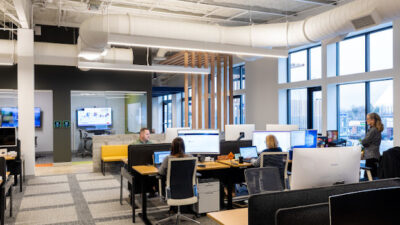Global demand for air travel is increasing substantially and is expected to continue. The aviation industry has responded by streamlining processes where they can, but also committing to building more and bigger terminals.

Global demand for air travel is increasing substantially and is expected to continue. The aviation industry has responded by streamlining processes where they can, but also committing to building more and bigger terminals. However, I can foresee a future where there will be no need for passenger terminals as currently experienced because the processes that required a centralised physical processing location (or ‘terminal’) are increasingly being eliminated, automated or moved outside the airport.
When commercial aviation first began, most terminals were nothing more than a shed to provide some protection from the weather. However, as passenger flows increased along with government processing requirements there was a need to consolidate those processes into a central location. Over the years, the number of processes and passenger numbers has increased the time it takes to be processed through this central site greatly.
Today, passengers must arrive at the terminal increasingly earlier to be processed, and then wait or ‘dwell’. The opportunity to commercially exploit that waiting time was recognised early on and thus the model of terminal as shopping centre with planes ‘out the back’ was born.
But recent automation efforts to improve the passenger experience and increase retail spend during ‘dwell time’ point to the decreasing need to be in the terminal at all. You can check-in via a smartphone app while you’re at home. New ‘platform capitalism‘ providers like TaskRabbit or Portr.com present the possibility that someone else handles your luggage for you, possibly even that your luggage travels separately like cargo. Online retail via mobile devices means you can buy items for your trip while on the move and have the goods delivered to your destination rather than struggling with them through the terminal building. And a programme called "Happy Flow", trialled in Aruba, uses facial recognition to reduce the burden of certain terminal based passenger processes, in turn improving the travel experience.
Even the passenger screening process is likely to be taken away from the terminal. Should passenger-screening embrace risk-based screening – potentially based on knowledge drawn from your digital identity – the need for physical screening could be reduced.
I believe that if we take all these trends together it’s clear that the air travel experience of tomorrow envisages a greatly reduced role for traditional terminal buildings. The challenge of ever greater passenger numbers relies on a streamlined aviation experience, not constructing ever more vast terminal buildings.
Stacey Peel is an aviation security specialist at Arup I seek to ‘shape a better world’ by pursuing solutions for the aviation industry that not only reduce the risk from terrorism but are proportionate and suitable to their business. This article originally appeared on Arup Thoughts. Arup is a CFE Media content partner.
Edited by Ksenia Avrakhova, production coordinator, CFE Media, [email protected].



